By Pham Duy Phuc, Max Kersten and Tomer Shloman · March 23, 2023
Another day, another ransomware gang. The Dark Power ransomware gang is new on the block, and is trying to make a name for itself. This blog dives into the specifics of the ransomware used by the gang, as well as some information regarding their victim naming and shaming website, filled with non-paying victims and stolen data.
Based on our observations, there is no specific sector nor geographic area that is targeted by the gang, as they seem rather opportunistic.
Sample information
Filename
ef.exe
MD5
df134a54ae5dca7963e49d97dd104660
SHA-1
9bddcce91756469051f2385ef36ba8171d99686d
SHA-256
11ddebd9b22a3a21be11908feda0ea1e1aa97bc67b2dfefe766fcea467367394
File size
1323422 bytes (1.3 MB)
Compile date
2023-01-29 02:01:33
Compiler
Nim MINGW x64
Starting out as a bit of an obscure language originally, Nim is now more prevalent with regards to malware creation. Malware creators use it since it is easy to use and it has cross-platform capabilities.
Encryption key initialization
Upon starting, the ransomware creates a randomized 64-character long lowercase ASCII string. This string is used later on to initialize the encryption algorithm. An example is given in the figure below. The randomization ensures the key is unique each time the sample is executed, and therefore it is unique on each targeted machine, hindering the creation of a generic decryption tool. Within the sample, the Nimcrypto library is used to carry out cryptographic operations. The used cryptographic algorithm is AES CRT.

Binary string encryption
The strings within the ransomware are encrypted, which is likely done to make it harder for defenders to create a generic detection rule. The ciphertext strings are present within the binary in a base64 encoded format. Once the encrypted string is decoded, the string is decrypted using a fixed key, which is the SHA-256 hash of a hard-coded string. The initialization vector (IV) is also included within the binary, but each decryption call uses a different IV.
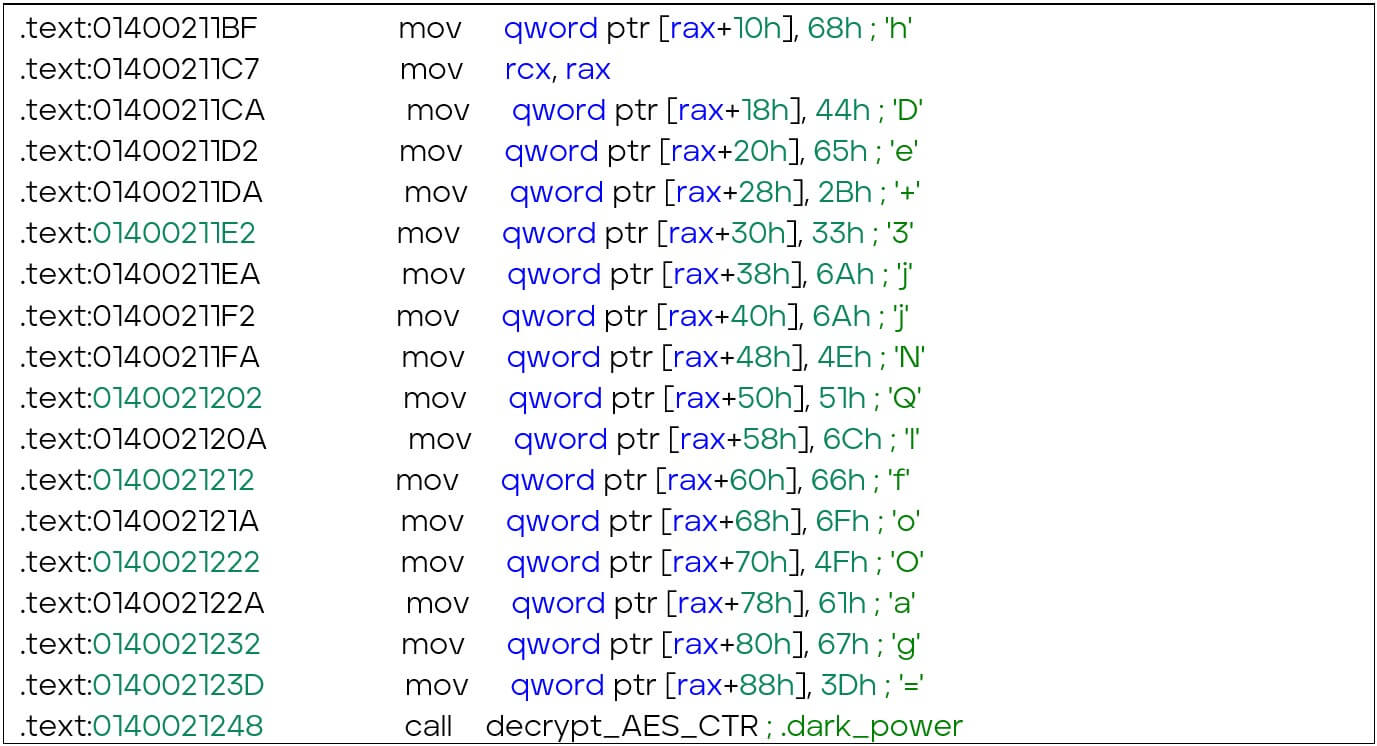
The disassembled instructions above are used to decrypt a string, the output of which is “.darkpower”. The IV is loaded into “rdx”, while “rax” is used to store the base64 encoded and encrypted string. The function call to “decrypt_AES_CTR” decrypts the given string.
To make the analysis of the malware easier, all encrypted strings can be decrypted, as can be seen in the image below. This will allow an analyst to more easily understand the ransomware’s inner workings.
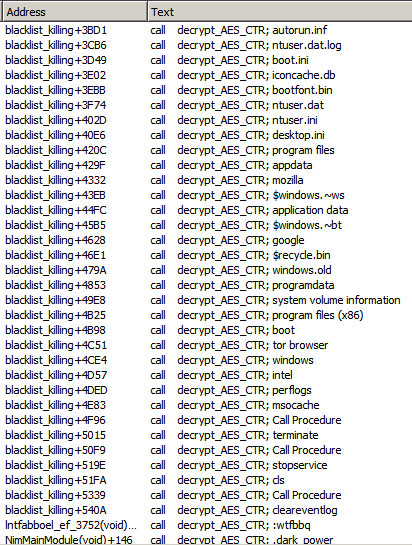
Stopping services
The Dark Power ransomware targets specific services on the victim’s machine. It stops the following services: veeam, memtas, sql, mssql, backup, vss, sophos, svc$, and mepocs. By disabling these services, the ransomware makes it difficult for the victim to recover their files, as the services either free files (i.e. databases) which allows the ransomware to encrypt them. Additionally, the Volume Shadow Copy Service (VSS) is stopped, which is common for ransomware to do. VSS keeps shadow copies of files.
Additionally, other back-up and anti-malware services are stopped. All in all, the goal is to increase the chance that a victim will pay the demanded ransom. If the ransomware detects any services or processes that match the predefined list, it will print “[YES] in killing (service name)” to the console, as can be seen in the figure below.

Process termination
Much like the stopped services, processes which often block files (such as office related activity) are terminated. The ransomware queries the Windows Management Instrumentation (WMI) named “winmgmts: & {impersonationLevel=impersonate}!.rootcimv2” with the query “select * from win32_process”. This query returns a list of all running processes. Any matches with the predefined process names are terminated. Within the list, entries such as taskmgr.exe, steam.exe, and firefox.exe are present, as well as Microsoft Office processes, such as excel.exe, winword.exe, powerpnt.exe, and visio.exe. The ransomware also targets specific processes related to database management, including sql.exe, oracle.exe, and dbsnmp.exe to ensure the encryption process of all databases. By terminating these processes, the ransomware aims to ensure that it can complete its encryption process without encountering locked files. The complete list of process names is given below.
taskmgr.exe
agntsvc.exe
synctime.exe
encsvc.exe
mspub.exe
infopath.exe
powerpnt.exe
onenote.exe
mydesktopservice.exe
ocssd.exe
winword.exe
firefox.exe
steam.exe
thebat.exe
oracle.exe
isqlplussvc.exe
excel.exe
sqbcoreservice.exe
outlook.exe
mydesktopqos.exe
dbeng50.exe
sql.exe
ocautoupds.exe
tbirdconfig.exe
ocomm.exe
thunderbird.exe
msaccess.exe
visio.exe
dbsnmp.exe
wordpad.exe
xfssvccon.exe
Excluding files and folders from encryption
Once all targeted services and processes are stopped and terminated, there is one more filter to be applied by the ransomware: the exclusion of file names, file extensions, and folder names. In order for a victim to see the ransom note, a working machine is required. As such, certain files and folders, which are crucial for the system to remain operational, are excluded. Below is the list of the excluded files, folders, and extensions:
.lib
.theme
.dll
.bin
.ocx
.search-ms
.msi
.hta
.mod
.rom
.dat
.sys
.deskthemepack
.ics
.prf
.ini
.wpx
.nomedia
.com
.themepack
.regtrans-ms
.cpl
.msu
.hlp
.msstyles
.ps1
.adv
.rtp
.spl
.lnk
.log2
.msc
.msp
.nls
.icns
.log1
.scr
.idx
.cab
.mpa
.blf
.bat
.ani
.exe
.drv
.ldf
.key
.386
.diagpkg
.cur
.lock
.ico
.diagcfg
.icl
.diagcab
readme.pdf
autorun.inf
bootfont.bin
ntldr
ntuser.dat.log
ntuser.dat
thumbs.db
boot.ini
ntuser.ini
bootsect.bak
iconcache.db
desktop.ini
program files
$recycle.bin
tor browser
appdata
windows.old
windows
mozilla
programdata
intel
$windows.~ws
system volume information
perflogs
application data
program files (x86)
msocache
$windows.~bt
boot
Clearing logs and console
After killing services, the ransomware sleeps for 30 seconds and executes the Windows command “C:Windowssystem32cmd.exe /c cls” to clear the console (Code 2). In this sample, the ransomware uses the WMI query “Select * from Win32_NTEventLogFile” and “ClearEventLog()” to clear the system logs. Clearing logs is a common tactic used by ransomware to hide their tracks and to make it difficult for analysts to investigate the attack. Afterwards, it initiates the spreading ransom notes and encryption process.
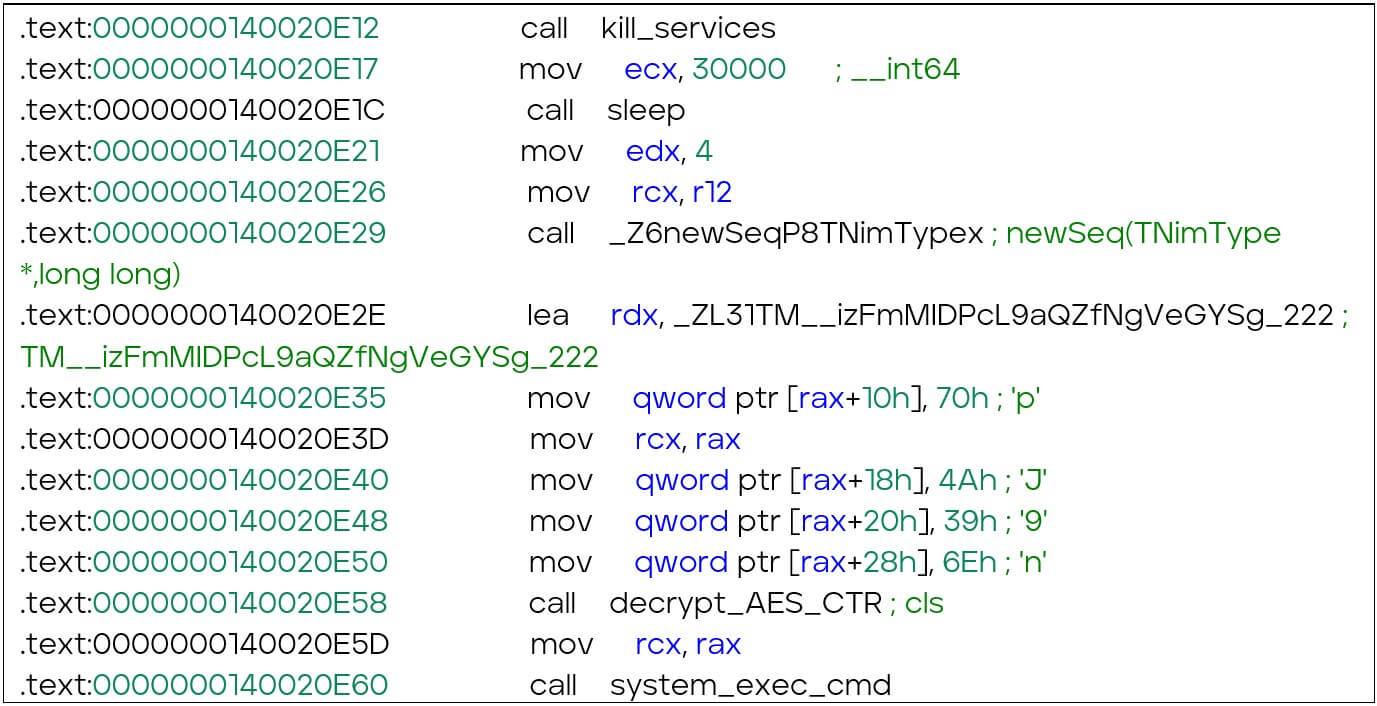
Writing ransom notes
Every folder which is enumerated by the ransomware, will receive a copy of the ransom note (Figure 4). Unlike the usual plain text ransom notes, this ransom note is a PDF file. The note is created using Adobe Illustrator 26.0, and last modified on the 9th of February 2023.
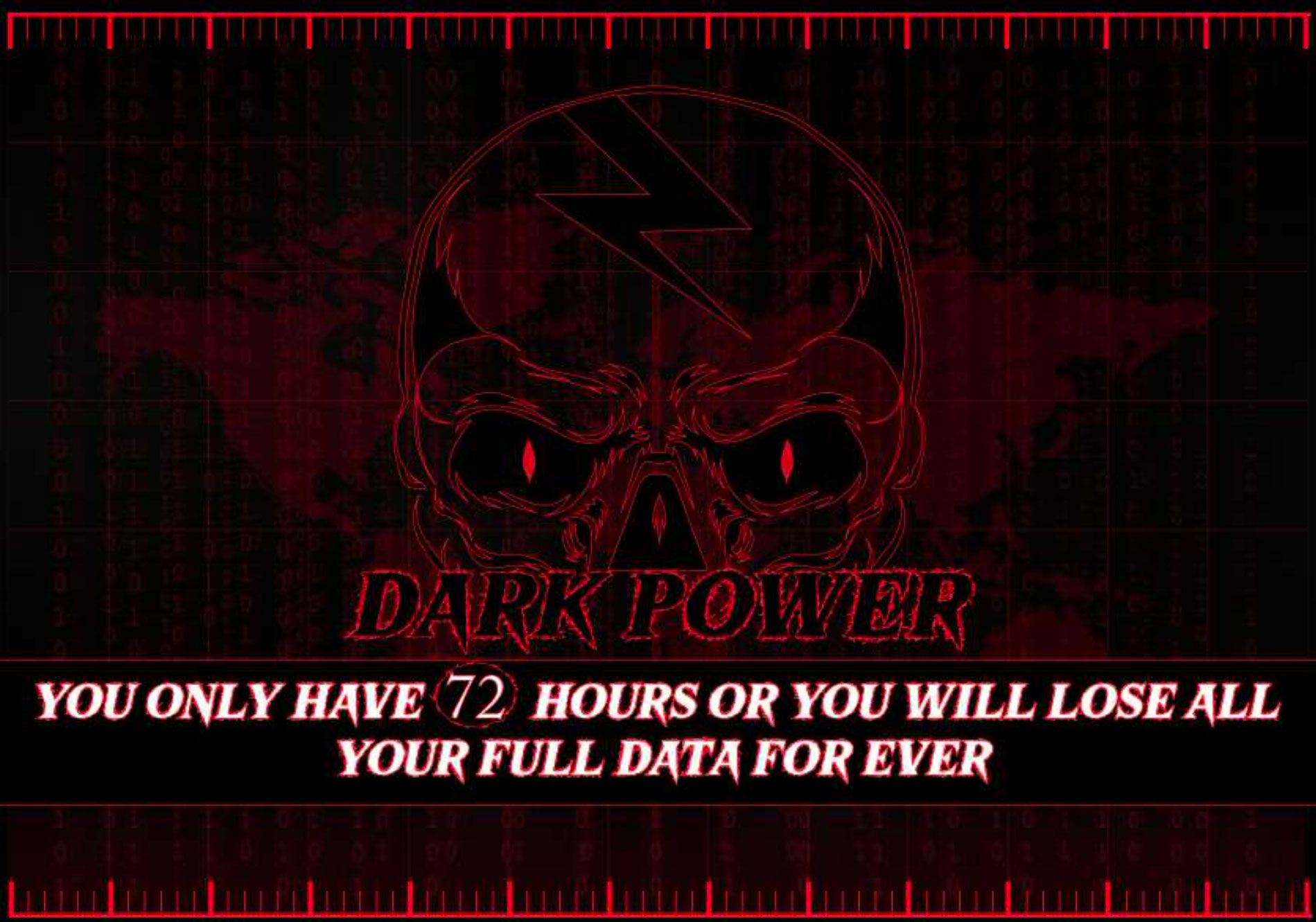
The ransom note demands $10,000 USD to a Monero blockchain address: XMR
85D16UodGevaWw6o9UuUu8j5uosk9fHmRZSUoDp6hTd2ceT9nvZ5hPedmoHYxedHzy6QW4KnxpNC7MwYFYYRCdt[redacted]
The ransom note also provides a Tor website (power[redacted].onion) that includes claimed victims (Figure 5) and a qTox ID (EBBB[redacted]) for chat. Both the Tor network and the qTox messenger allow anonymity due to decentralized servers and communication protocols. The claimed victims are shown in the figure below, where each rectangle is a logo of the victimised company. The logos are blurred in the image below to refrain from sharing who the victims are, but there is no such blur on the actor’s website.
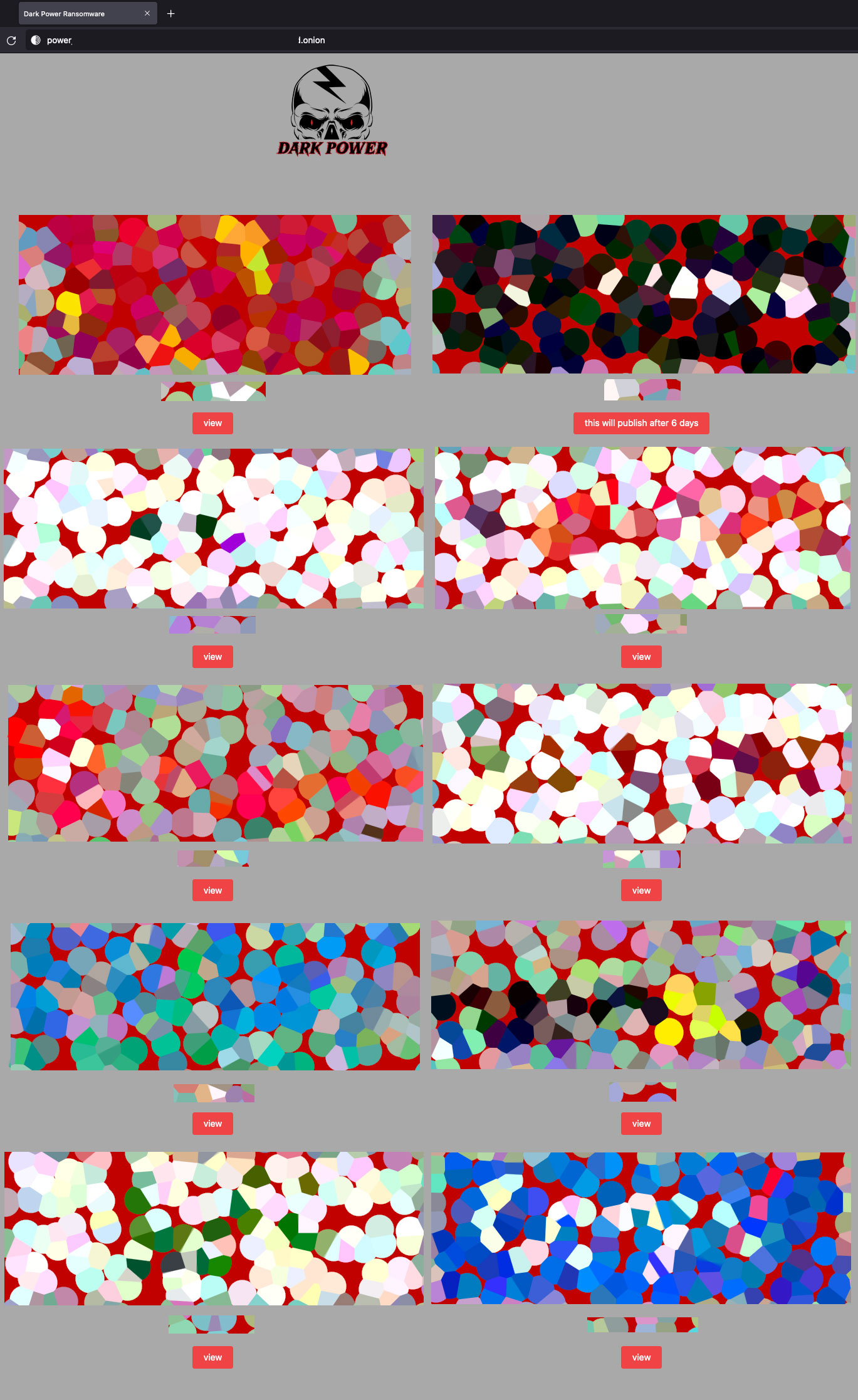
Data encryption
The encryption of the files which aren’t filtered out, are encrypted using AES (CRT mode). The encrypted file paths are printed, along with a counter, in the standard output, as can be seen in the image below.
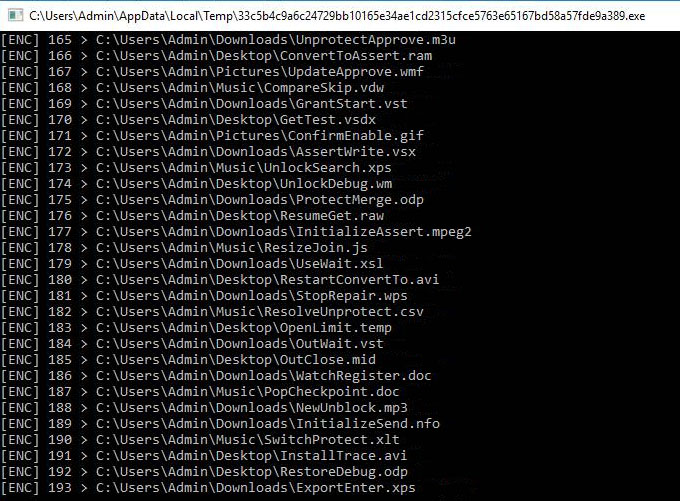
There are two versions of the ransomware in the wild, each with a different encryption key and format:
- In the first variant, the resulted sha256 digest of the randomized key is split into two halves. The first half is used as the AES key, while the second half is used as the IV (nonce).
- In the second variant, the resulted sha256 digest of the randomized key is used as the AES encryption key, and a fixed 128-bit value, “73 4B D9 D6 BA D5 12 A0 72 7F D6 4C 1E F4 96 87” is used as the encryption nonce.
After a full encryption of the file contents, the ransomware renames encrypted files with the “.dark_power” extension.
Threat intelligence
The Dark Power ransomware group is one of the many groups to extort their victims twice: once by encrypting the data, and once by publishing stolen data if no payment is received.
The ransomware itself does not upload any files, leading to the assumption that the data exfiltration is done manually, and prior to the deployment of the ransomware.
The Dark Power gang is operating on a global scale, with claimed victims in Algeria, the Czech Republic, Egypt, France, Israel, Peru, Turkey, and the USA. According to the group’s website, they have successfully targeted ten victims. The sectors of the victims, in no particular order, are: education, IT, healthcare, manufacturing, and food production.
What should you do if your system is infected with Dark Power ransomware
It is important to note that paying the ransom does not guarantee that the files will be decrypted. In addition, paying the ransom only encourages and funds the activities of ransomware authors. Victims are advised to not pay the ransom and report the attack to law enforcement agencies and seek assistance from reputable security professionals to recover their files. The NoMoreRansom initiative is a good place to start if you are the victim of ransomware.
Conclusion
The adoption of new(er) languages, such as Nim, Golang, or Rust, by malware authors is a trend that isn’t new. The cost of the continuous upkeep of knowledge from the defending side is higher than the attacker’s required skill to learn a new language. Sharing this information, in blogs such as these, will help the community as a whole.
Dark Power shows that a pretty generic approach to ransomware can still be effective, regardless of the language it is written in.
Appendix A – Trellix Dark Power detection signatures
Product
Signature
Endpoint Security (ENS)
Ransomware-HMQ
Endpoint Security (HX/AV/MG)
Trojan.GenericKD.65499855
Trojan.GenericKD.65428966
Network Security(NX)
Detection as a Service
Email Security
Malware Analysis
File Protect
Ransomware.Win64.Crypren.FEC3
Malware.Binary.exe
Appendix B – Key behaviors: ATT&CK techniques
Execution
Defense Evasion
Discovery
Impact
T1059 Command and Scripting Interpreter
T1027 Obfuscated Files or Information
T1082 System Information Discovery
T1486 Data Encrypted for Impact
T1047 Windows Management Instrumentation
T1140 Deobfuscate/Decode Files or Information
T1057 Process Discovery
T1490 Inhibit System Recovery
T1070.001 Indicator Removal: Clear Windows Event Logs
T1489 Service Stop
Appendix C – IoCs
SHA256 hashes of the analysed samples:
33c5b4c9a6c24729bb10165e34ae1cd2315cfce5763e65167bd58a57fde9a389 11ddebd9b22a3a21be11908feda0ea1e1aa97bc67b2dfefe766fcea467367394
Source: https://www.trellix.com/en-us/about/newsroom/stories/research/shining-light-on-dark-power.html